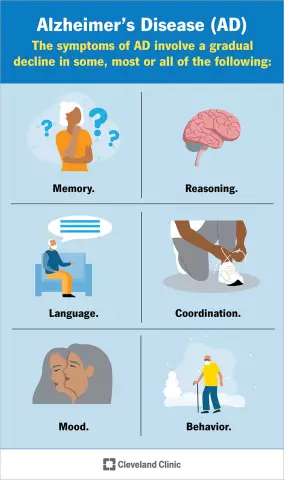- Author Rachel Wainwright [email protected].
- Public 2023-12-15 07:39.
- Last modified 2025-11-02 20:14.
Ascites
The content of the article:
- Causes
- Kinds
- Signs
- Diagnostics
- Treatment
- Prevention
- Consequences and complications
- Forecast
Ascites is a pathological accumulation of fluid in the abdominal cavity.
Ascites can develop rapidly (over several days) or over a long period (weeks or months). Clinically, the presence of free fluid in the abdominal cavity manifests itself when a fairly large volume is reached - from 1.5 liters.
The amount of fluid in the abdominal cavity sometimes reaches significant numbers - 20 liters or more. By origin, ascitic fluid can be of an inflammatory nature (exudate) and non-inflammatory, resulting from a violation of hydrostatic or colloidal osmotic pressure in pathologies of the circulatory or lymphatic system (transudate).

In more than 80% of cases, ascites is caused by decompensation of a chronic disease or an acute inflammatory process in the liver.
Causes
There are several groups of diseases in which ascites develops:
- pathologies accompanied by increased pressure in the portal vein of the liver, that is, portal hypertension (cirrhosis of the liver, Budd-Chiari disease, thrombosis in the portal vein system, Stuart-Bras syndrome);
- malignant neoplasms (peritoneal carcinomatosis, primary liver cancer, Meigs syndrome, peritoneal mesothelioma, sarcoma of the greater omentum, pseudomyxoma of the peritoneum);
- congestion in the inferior vena cava system (chronic constrictive pericarditis, right ventricular heart failure);
- inflammatory processes in the abdominal cavity (tuberculous peritonitis, bacterial peritonitis, polyserositis with systemic lupus erythematosus, peritoneal alveococcosis);
- other conditions (nephrotic syndrome, Whipple's disease, intestinal lymphangiectasia, Menetrie's disease, myxedema, chronic pancreatitis, protein edema during fasting).

The main causes of ascites
In more than 80% of cases, ascites is caused by decompensation of a chronic disease or an acute inflammatory process in the liver. The second most common cause of ascites is neoplastic processes in the abdominal cavity (about 10%). Diseases of the cardiovascular system lead to the development of ascites in about 5% of cases, other causes are quite rare.
Kinds
Depending on the amount of fluid in the abdominal cavity, they speak of several degrees of the pathological process:
- Small ascites (no more than 3 liters).
- Moderate (3-10 liters).
- Large (massive) (10-20 liters, in rare cases - 30 liters or more).
According to the infection of ascites content, the following are distinguished:
- sterile (uninfected) ascites;
- infected ascites;
- spontaneous bacterial peritonitis.
According to the response to ongoing therapy, ascites is:
- transitory. Disappears against the background of conservative treatment in parallel with the improvement of the patient's condition forever or until the period of the next exacerbation of the pathological process;
- stationary. The appearance of fluid in the abdominal cavity is not an accidental episode, it persists in an insignificant volume even despite adequate therapy;
- resistant (torpid, or refractory). Large ascites, which can not only be stopped, but even reduced with large doses of diuretics.
If the accumulation of fluid continues to increase steadily and reaches enormous sizes, despite the ongoing treatment, such ascites is called tense.
Signs
The main signs of ascites are a uniform increase in abdominal volume and an increase in body weight. Often, an increase in the volume of the abdomen with ascites is mistaken by patients for the manifestation of obesity, pregnancy or intestinal diseases, accompanied by increased gas production.
In a standing position, the abdomen looks disproportionately large, saggy, in the patient's position on his back, the lateral flanks of the abdomen are spread (there is a "frog belly"). The skin of the anterior abdominal wall is taut, shiny, tense. Expansion and protrusion of the umbilical ring are possible due to increased intra-abdominal pressure.

Ascites symptoms
If ascites is triggered by increased pressure in the portal vein, enlargement and tortuosity of the veins of the anterior abdominal wall ("Medusa's head") are noted. For cirrhosis, skin "liver signs" are characteristic: palmar erythema, spider veins on the chest and shoulders, brownish pigmentation of the forehead and cheeks, white nail plates, purpura.
Diagnostics
For reliable confirmation of ascites, an integrated approach to diagnosis is required:
- collection of anamnesis (information about past infectious diseases, possible alcohol abuse, chronic pathology, previous episodes of ascites);
- objective examination of the patient (examination, palpation of the abdominal organs, abdominal percussion in a horizontal, vertical position and on the side, as well as determination of fluid fluctuation);
- Ultrasound examination;
- CT scan;
- diagnostic laparocentesis (puncture of the anterior abdominal wall with subsequent examination of ascitic fluid).
Treatment
To eliminate ascites, first of all, it is necessary to stop the underlying disease.
Treatment activities:
- a diet with fluid and salt restriction;
- diuretics (diuretics);
- hemodynamically active neurohormonal modulators - beta-blockers, inhibitors of angiotensin-converting enzyme (ACE inhibitors), angiotensin receptor antagonists (ARA II);
- drugs that increase oncotic (blood plasma and albumin preparations) and osmotic (aldosterone antagonists) pressure in the blood;
- drugs to improve renal filtration;
- hepatoprotectors;
- antibiotic therapy (if necessary);
- therapeutic laparocentesis to reduce the volume of ascitic fluid;
- surgical treatment, in severe cases - liver transplantation.
Prevention
Ascites is a complication of common diseases, therefore, the main measure of its prevention is timely and adequate treatment of the underlying disease. In addition, they contribute to the prevention of ascites:
- strict adherence to the recommendations of the attending physician;
- avoiding alcohol abuse;
- dieting.

Therapeutic laparocentesis to reduce fluid volume in ascites
Consequences and complications
Ascites can lead to the following serious consequences:
- respiratory failure (due to an increase in the volume of the abdominal cavity and limitation of the excursion of the diaphragm);
- spontaneous bacterial peritonitis;
- refractory ascites;
- hepatic encephalopathy;
- hepatorenal syndrome.
The occurrence of spontaneous bacterial peritonitis in patients with liver cirrhosis leads to repeated bleeding from esophageal varices. Mortality after the first episode of bleeding is 30-50%. In 70% of patients who survived one episode of bleeding from varicose veins of the esophagus, bleeding occurs again. The risk of re-development of ascites within 6 months is 43%, within 1 year - 69%, within 2 years - 74%.
Forecast
The two-year survival rate in patients with ascites is 50%. When refractory ascites appears, half of the patients die within a year.
Poor prognostic factors for patients with ascites:
- advanced age (over 60);
- low blood pressure (systolic pressure less than 80 mm Hg. Art.);
- decreased glomerular filtration rate (less than 500 ml / min);
- a decrease in the content of serum albumin (less than 28 g / l);
- hepatocellular carcinoma;
- diabetes.
YouTube video related to the article:

Olesya Smolnyakova Therapy, clinical pharmacology and pharmacotherapy About the author
Education: higher, 2004 (GOU VPO "Kursk State Medical University"), specialty "General Medicine", qualification "Doctor". 2008-2012 - Postgraduate student of the Department of Clinical Pharmacology, KSMU, Candidate of Medical Sciences (2013, specialty "Pharmacology, Clinical Pharmacology"). 2014-2015 - professional retraining, specialty "Management in education", FSBEI HPE "KSU".
The information is generalized and provided for informational purposes only. At the first sign of illness, see your doctor. Self-medication is hazardous to health!






